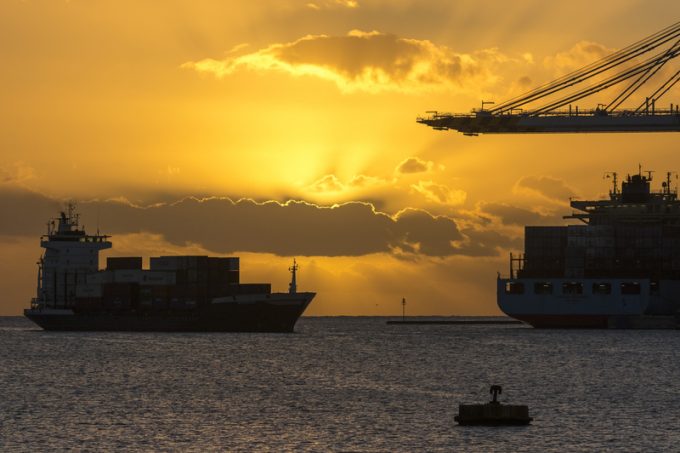Anyone got a ship for an east-west service? Carriers scramble for tonnage
Ocean carriers are “scrambling for any tonnage” to provide additional capacity on east-west services, but ...
TFII: SOLID AS USUALMAERSK: WEAKENINGF: FALLING OFF A CLIFFAAPL: 'BOTTLENECK IN MAINLAND CHINA'AAPL: CHINA TRENDSDHL: GROWTH CAPEXR: ANOTHER SOLID DELIVERYMFT: HERE COMES THE FALLDSV: LOOK AT SCHENKER PERFORMANCEUPS: A WAVE OF DOWNGRADES DSV: BARGAIN BINKNX: EARNINGS OUTODFL: RISING AND FALLING AND THEN RISING
TFII: SOLID AS USUALMAERSK: WEAKENINGF: FALLING OFF A CLIFFAAPL: 'BOTTLENECK IN MAINLAND CHINA'AAPL: CHINA TRENDSDHL: GROWTH CAPEXR: ANOTHER SOLID DELIVERYMFT: HERE COMES THE FALLDSV: LOOK AT SCHENKER PERFORMANCEUPS: A WAVE OF DOWNGRADES DSV: BARGAIN BINKNX: EARNINGS OUTODFL: RISING AND FALLING AND THEN RISING

Owners of smaller containerships are now settling for much shorter charters and reduced daily hire rates as the market continues to soften.
The ‘normalisation’ of the sector will be of great assistance to shortsea and feeder operators, which require flexibility in their operating fleets to meet demand peaks and troughs.
Feeder operators in particular will be relieved. One contact told The Loadstar it had been “feast or famine” this year for its liner feeder services.
“One week we have a lot of volume to transport, but by the next week, bookings could be halved,” he explained.
“I think it has a lot to do with carriers blanking sailings, or sliding voyages from China to North Europe into the next week so that they can improve the load factors of the ships that do sail,” he said.
“Unfortunately for us, when we get to, say, Rotterdam, we either have too much cargo for our feeders, or in the worst case, too little, and the lines won’t pay any dead freight for the empty slots.”
Indeed, another feeder operator contact told The Loadstar volumes across his network of services had been, “up one week, and down the next”, adding: “We have had to take the vessel sizes right down in order not to lose our shirts.”
For the vessel owners, however, the drip-drip of expiring charters means that the lengthy hire periods of elevated rates will be coming to an end at some stage, obliging them to place open tonnage on the spot market.
Nevertheless, the legacy of long-term charters, agreed with carriers when demand was at its peak last year, means that containership owners will not feel the full impact of the downturn for some time.
In fact, Greek-based non-operating owner (NOO) Danaos said, at the end of the second quarter, it had a total charter hire backlog of some $2.5bn for its fleet of 68 containerships, with a 100% coverage for this year and 86% for 2024. And as long as charterers do not default, the NOO’s turnover is virtually insulated until at least 2025.
Meanwhile, charterers are back in the driving seat again for the smaller containerships that do become open.
Braemar reported this week that CMA CGM had fixed the 2019-built 1,912 teu handy-sized Zhong Gu Dong Hai for $12,000 a day, for a flexible 1-6 months duration; and that the 2012-built 2,758 teu sub-panamax CUL Jakarta had been taken by Bengal Tiger Line at a modest $14,500 a day for 1-2 months.
These fixtures demonstrate the ‘normalisation’ of a container charter market that 12 months ago would have seen similar-sized ships fixed for minimum two-year periods at daily hire rates of $60,000 to $80,000.
Moreover, the asset values of these ships has tumbled.
For example, according to Vesselsvalue, the asset value of the CUL Jakarta stood at around $60m in March 2022, but has now plunged to approximately $19m, with a scrap valuation of $7m.
Comment on this article